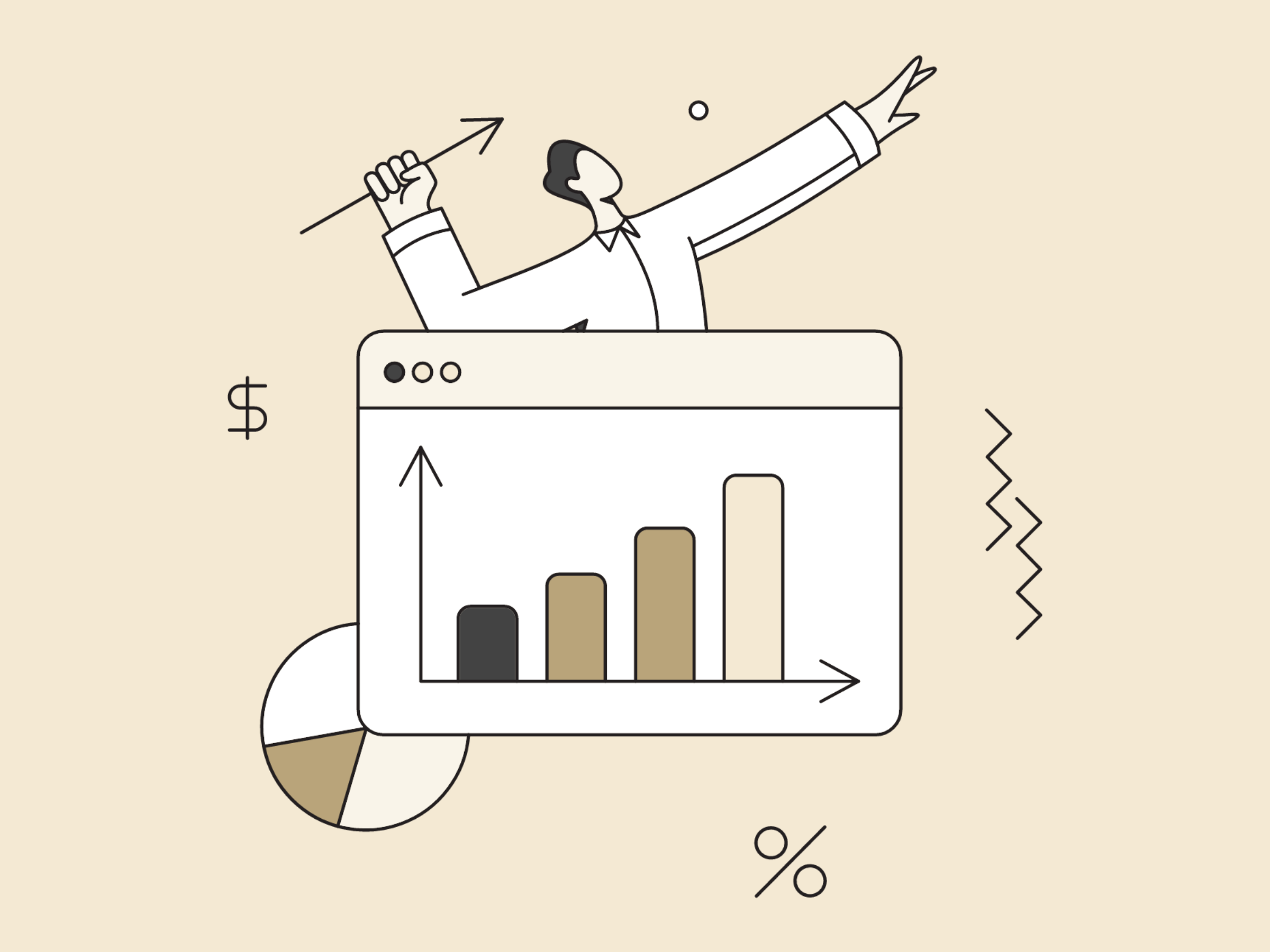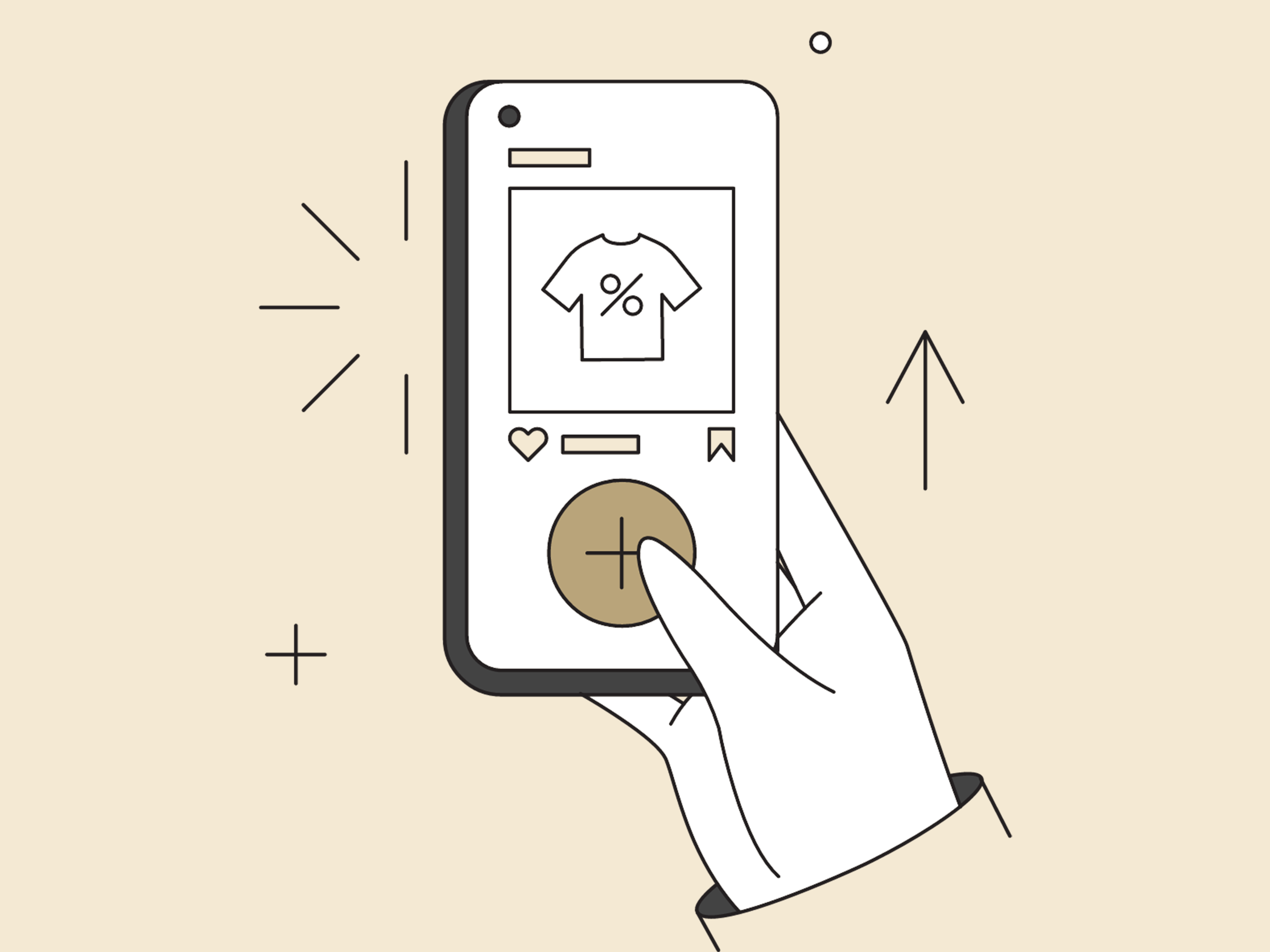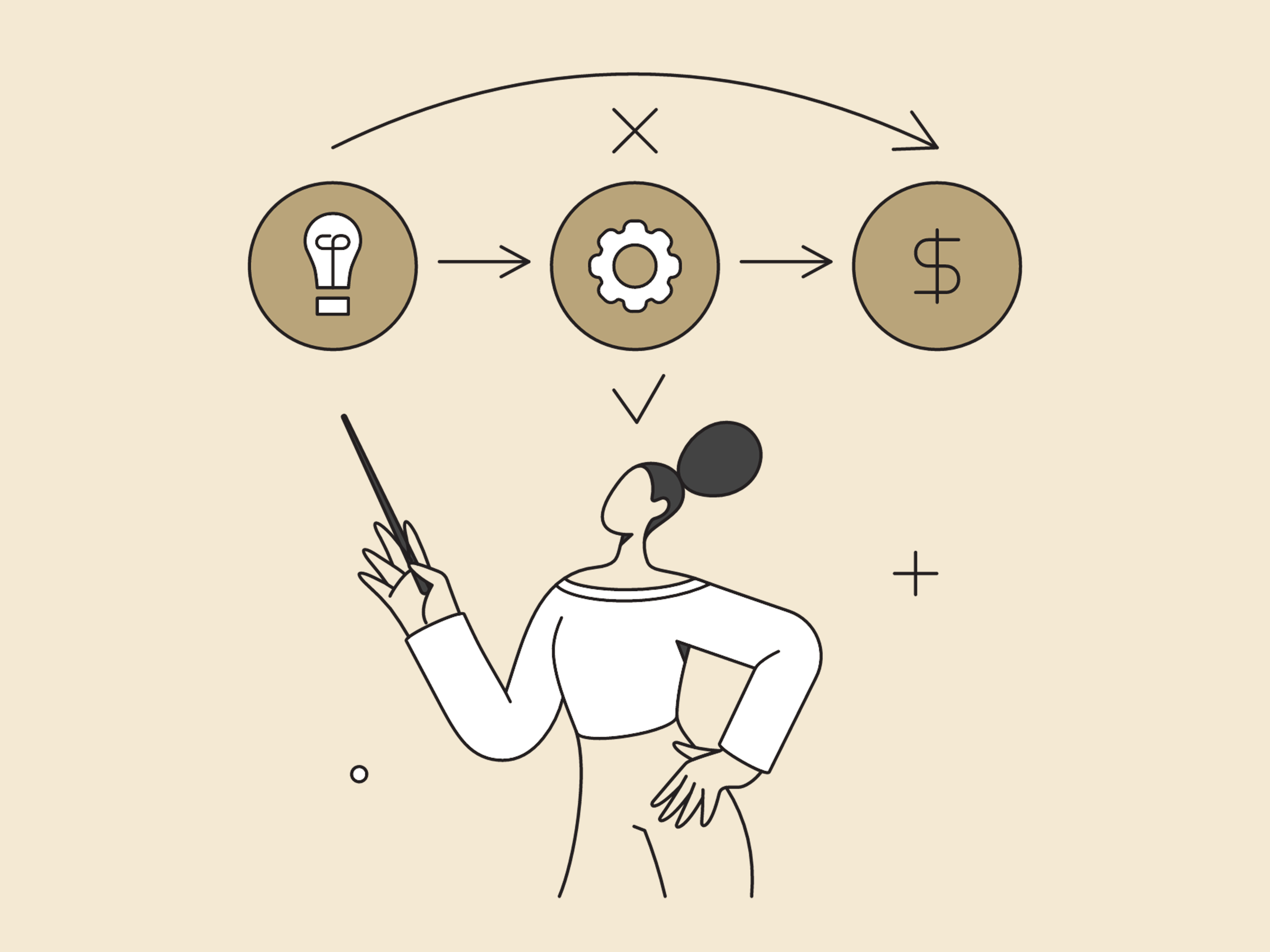Ecommerce growth might be slowing down, but retail sales increased by 15% in 2022 compared to 2020, according to Statista. But, with an economic downturn looming, it’s no surprise that most shoppers are cautious about how they’re currently spending their money. As a brand owner in today’s fragile market, where change is the only constant, it’s essential to be adaptable in your approach to achieving marketing goals in the coming months.
When setting ecommerce marketing goals, eight must-have goals can lead to sales growth even during uncertain times. This guide will walk you through the fundamentals to increase your market share and maximise your ecommerce sales potential.

What is ecommerce marketing?
Ecommerce marketing is vital to the success of any online business, as it involves all parts of the customer journey, from creating brand awareness to earning their loyalty and making sales. To be successful, ecommerce marketers should always remain open-minded and willing to adjust their strategies based on new information about their customers’ behaviour or changes in online shopping trends.
A comprehensive ecommerce marketing strategy consists of tactics – both on and off your website – attracting customers and driving traffic back to your store. “Commerce is everywhere”, according to Arpan Podduturi, Director of Product Retail and Messaging at Shopify. In Shopify’s latest trend report, Arpan states that “the purchase journey is non-linear. It can happen from seeing an ad on Instagram, an influencer on TikTok, or a drop on Twitter. You might be window shopping in person, or a friend might send you a link.”
Ecommerce marketers can use multiple channels to reach new users and engage with existing contacts. Research shows that using three or more media types can result in a 287% higher purchase rate than one or two channels. However, it’s essential to be aware of customers’ current emotional and financial state to avoid sending insensitive messages.
Why create different marketing goals for ecommerce?
Creating different marketing goals for ecommerce is essential to ensure success in the rapidly changing market. With so much competition, it’s crucial to have a clear strategy and set achievable goals to help you scale your business even during uncertain times.
Shoppers have more options than ever, and in today’s economic climate, people vote with their wallets. Between May 2021 and May 2022, seven out of ten customers bought items from competitors over their go-to brand, according to Insider Intelligence. In addition, shoppers like the convenience of shopping on whichever social media platform they browse. All this is good news for online retailers concentrating on customer acquisition and improving conversion rates as marketing goals.
Here are eight must-have marketing goals for ecommerce growth
Setting ecommerce marketing goals is crucial to make progress online quicker. Outlining plans to increase e-commerce sales helps brand owners concentrate their energy online on areas with the highest possibility for financial gain and reaching overarching business goals. To get started, here are eight must-have goals to include in your digital marketing strategy:
- Increase store visits online.
- Aim to earn a profit from each purchase
- Optimise store performance by improving site speed
- Improve customer retention and loyalty
- Capture more email and SMS subscribers
- Increase average order values
- Expand your store’s reach into new markets
- Take advantage of data-driven insights to make site improvements.
1. Increase store visits online.
One of the most important goals for any ecommerce store is to increase traffic going to their online storefront. This goal is essential for any business wanting to grow and succeed in the digital age. Your online store is also your “best salesperson”. Studies show that customers complete 70-90% of the buying process before reaching out to your sales squad.
The first step to increasing store visits online is to create a website that is easy to navigate and attractive to shoppers. An online store should be designed with shoppers in mind, ensuring it has all the necessary information they need to purchase without further assistance. It should also be optimised for mobile devices so customers can easily shop.
Once your online storefront is up and running, focus on attracting customers to your store through a digital marketing strategy that aligns with any offline tactics. A coordinated approach will help increase visibility and draw more potential customers online.
Also, use analytics to monitor traffic and store performance, and make changes to the customer journey. Monitoring performance will help you understand which tactics are working and which need to be improved.
2. Aim to earn a profit from each product sold
In the early 2010s, it was conventional wisdom for new brands to enter the market using pay-per-click ads with loss-leader pricing to sell items at a price lower than the cost to produce them to attract new customers. Since the cost to buy new customers on social media was so cheap, this made sense. And although some brands do reach $1 billion-plus valuations and successful initial public offerings using this tactic, profitability still needs to be achieved.
The competition for social media ad space in 2020 forced the costs to get new customers to skyrocket, making marketing the primary expense for many direct-to-consumer brands. However, profit-minded startups that use more cost-effective ways to attract new customers avoid going into the red for top and bottom-line growth, which is essential when the economy is weaker.
3. Optimise store performance by improving site speed
Website speed is essential to consider when optimising your website. A slow ecommerce site can lead to a high bounce rate, resulting in fewer conversions and sales. Therefore, improving page load times is essential to giving customers a positive experience on your site. You can improve load times by reducing the size of images, compressing files, and minifying HTML, CSS, and JavaScript code. Also, caching techniques such as browser caching or server-side caching can help improve website performance.
Besides optimising load times, you should also focus on other aspects of your store’s layout and design. For example, ensure that you’re using header tags correctly and that product images are optimised with alt text for better visibility in image searches. Also, creating an intuitive and easy-to-navigate layout is essential so customers can quickly find what they’re looking for. For example, use landing pages to guide potential customers towards a purchase and keep product pages clutter-free.
4. Improve customer retention and loyalty
Customer retention and loyalty are essential for any online store. After all, keeping existing customers is much easier than acquiring new ones. To do this, you must focus on creating a positive customer experience and engaging content relevant to your customers.
A positive customer experience
Your customers should have a positive experience with your store from when they land on your website to when they receive their orders. Ensure you have a user-friendly website, an easy checkout process, and fast shipping options. Additionally, provide excellent service so that customers feel valued and appreciated. Also, offer loyalty programs or discounts to reward customers for their loyalty and encourage them to return and shop again.
Engaging Content
Create content that is engaging and relevant to your customers. For example, your content strategy could include blog posts, videos, and social media posts that provide valuable information that keeps a loyal customer coming back for more.
5. Capture more email and SMS subscribers
Email marketing is a powerful tool for brand owners to reach customers and increase sales. It offers a personal connection with customers that you cannot achieve through social media posts alone. To increase your subscriber base and convert them into customers, place opt-in forms in strategic locations to maintain customers’ shopping experience. Segment your email list for better engagement, and analyse your marketing campaigns and automated sequences to improve performance.
Promoting your newsletter, blog, and other email capture efforts across all channels is also wise to obtain more subscribers and to ensure that email campaigns go further.
6. Increase average order values
If you’re looking to grow your ecommerce store, one of the most important goals you should set is to increase average order values. In practical terms, this means getting customers to buy more items in each transaction, which can significantly impact your bottom line.
There are several strategies you can use to increase average order values. One of the most effective is offering discounts for larger orders.
You can also offer bundle deals or add-ons to encourage customers to buy more items. Additionally, you can use upselling and cross-selling techniques to suggest related products that customers may be interested in.
7. Expand your store’s reach into new markets
You might have already noticed your store receiving orders from customers from different regions to your physical location. If so, one goal that should be on your list is to expand your store’s reach into new markets.
Expanding into new markets can open up a whole world of opportunities for your business. You can reach more customers, increase sales and profits, and grow your brand when your local economic market is slowing.
The beauty of ecommerce is the ability to sell to anyone, anywhere — no matter the distance from your physical store. To do this, you need to identify potential markets where your target audience shares similar qualities to your existing customer base. For example, according to Shopify, 75% of shoppers won’t consider buying from a site that isn’t in their language. So it’s wise to update your buyer personas and localise your store experience from the language and content to product imagery based on the location of visitors to make sure it resonates with customers in different countries.
8. Take advantage of data-driven insights to make site improvements.
Data-driven insights are essential for any ecommerce store that wants to grow and succeed — especially during trying times when marketing budgets are like to be smaller. There’s no denying that successfully achieving marketing goals requires an element of creativity. But, by taking advantage of data-driven insights, you can make informed decisions about improving your store’s layout to increase conversions and maximise profits.
Here are some ways you can use data-driven insights to make site improvements:
Analyse behavioural trends of current customers
Use analytics tools like Google Analytics to track user behaviour on your digital storefront. Reviewing your store analytics will help you identify areas of improvement and optimise your website for better performance.
Test different elements of your store’s layout and theme
Use A/B testing to test different elements on your website, such as headlines, images, and copy. A/B and multivariate testing will help you determine which versions of your store’s pages most effectively convert visitors into customers.
Monitor feedback about your product offerings
Keep an eye on feedback and reviews to understand what customers think about your store. Monitoring customer reviews will help you identify areas where you can improve and provide a better customer experience.
Make your mark in 2023
In conclusion, setting marketing goals is essential for any ecommerce store that wants to grow and succeed. With the right digital marketing strategy that aligns with larger business goals, you can focus on activities that will help you reach your desired outcomes – even during trying times like these. The eight must-have marketing goals outlined in this article will help you get started on the path to success.






